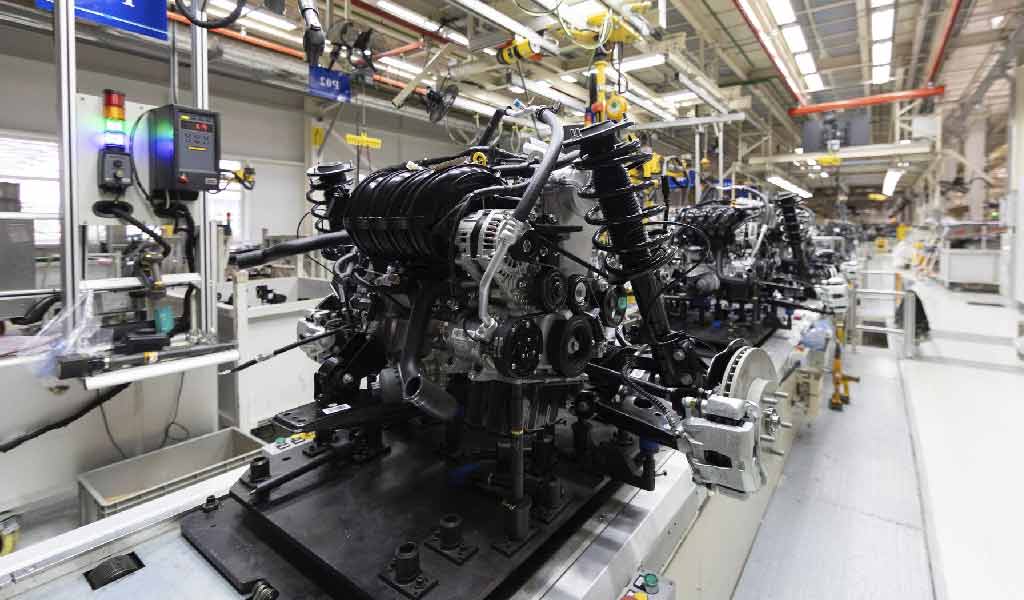Traceability provides the answer to questions like «where it was made, how and by whom», offering many advantages. This is why industrial traceability is essential in such demanding sectors as aeronautics, food or pharmaceuticals, among others. In this article, we will discuss traceability and why it is so important.

What is traceability?
Traceability is the ability to track and trace each part and product throughout the manufacturing process or beyond (suppliers, distribution, etc.). Traceability enables the entire history of a product to be tracked: which raw materials have been used, which processes it has undergone, what results it has obtained in inspections and what decisions have been made, etc. It is therefore key information not only for the customer, but also for the continuous improvement of processes insofar as it enables the source of problems to be identified and action to be taken on specific aspects of the process.
Traceability can be guaranteed at different levels within the entire value chain, leading us to classify it in different ways depending on the areas it covers, either by type of assets or study dimensions.
Types of traceability: physical and digital
Depending on the type of asset, monitoring and tracking is two-fold: physical and digital.
At the physical level, physical resources can be monitored and tracked, i.e. the part to be manufactured, its parts or components, the batches created for dispatch, etc. This part also includes everything related to location: where it is right now, where it has been before, etc.
However, it is also possible to extend this traceability to the digital level, including the actual processes and/or human resources. In this respect, some data could be the parameters of machining processes, the programmes used or the workers who have been involved in the processes and any other information that can be stored digitally.
Is Traceability and Identification the same thing?
Although they are closely related, it is important to differentiate between traceability and identification. The former has already been defined, and the ISO 9000 definition of traceability states that it is the «ability to trace the history, application, use and location of an item”.
Identification, on the other hand, is “merely” the ability to identify and differentiate an object from others.
The difference is obvious. Traceability, unlike identification, enables information to be compiled that can be used to analyse and improve shop floor processes. For example, traceability data can be used to generate smart digital models that allow for real time management of resources and orders.
Although they are closely related, it is important to differentiate between traceability and identification.
Why traceability is important for industry
Having a good traceability system in place offers industry a series of significant benefits. Some of the most important ones are listed below.
1. Increased quality and efficiency
Traceability helps to increase quality and efficiency by providing manufacturers with visibility regarding their operations and facilitating the identification of the cause(s) of problems that would otherwise be difficult to ascertain.
For example, thanks to a part’s traceability information, as soon as an out-of-tolerance issue is detected (preferably before reaching the end of the line), the potential sources of the problem can be identified, thus facilitating direct action and a much more agile and efficient resolution.
It will only be a matter of time before traceability becomes a standard.
Without a traceability system, the response to this situation would be much slower and ineffective, requiring more time and dedication from operators, generating problems with customers and even the loss of orders.
2. Continuous improvement
Having information on how components and parts move along the production lines fosters continuous improvement, by identifying critical paths, where bottlenecks occur, sources of delays, sub-processes in which the highest volume of defective parts is generated, etc.
3. Root cause analysis
Having information on the path followed by all products enables manufacturers to carry out more in-depth analyses that facilitate the detection of the root cause of problems and inefficiencies. Resolving root cause problems may have a major impact on the entire line.
4. Regulatory compliance
As we will see later, there are some sectors in which traceability is an obligation due to the nature of the activity. Therefore, in order to enter one of these markets, there must be a traceability system that complies with specific regulations.
It may also be necessary to develop a traceability system at the customer’s request. We recommend taking the initiative in advance and implementing such a system to benefit from value it offers internally (process improvement) and externally (with a view to customers).
Moreover, the tendency is that more and more sectors are incorporating traceability criteria (beyond those in which it is compulsory, which are mentioned below). Therefore, it will only be a matter of time before it becomes a standard, so the sooner it is implemented, the better.
Examples of sectors in which traceability is essential
We have seen that traceability has many advantages, but there are some cases in which it offers more than these benefits. There are industries in which traceability is a compulsory requirement due to the specific nature of the activity. Being aware of some of the sectors in which traceability is essential and the reasons for this can help us obtain a better understanding of its benefits.

Traceability in the aeronautical sector
A commercial plane is made up of millions of hardware and software components. Despite this, planes are by far the safest means of transport, as they have the strictest safety-critical criteria.
The reason is clear. In the event of an accident, the consequences may be catastrophic. Therefore, a great deal of effort is devoted to minimising the possibility of this happening.
Even when a minor failure occurs, it is essential to be able to know what has happened and why. This means that all of the parts from all manufacturers and suppliers must be fully traceable in order to be able to perform the aforementioned root cause analysis. In this way it is possible to know exactly where a failure has occurred in the supply chain, enabling that product and similar defective products to be recalled prior to their installation.
Traceability in the food and pharmaceutical sectors
Other sectors in which traceability is essential (and compulsory) are the food and pharmaceutical sectors.
In both of them, traceability enables information to be compiled that identifies and registers the composition, distribution and sales destination of the products, among other details. The aim is to guarantee the safety of the final consumer in the event of a defective batch, assure quality criteria and the fulfilment of standards and to be able to identify the cause and origin of the problem.
Traceability within the digital strategy
As we have seen, traceability can have a very positive impact on a company’s operations and accounts: cost savings, increased quality and efficiency, etc. It is undoubtedly a key tool to achieve more efficient and autonomous processes.
The information obtained from the traceability system has a direct impact on efficiency, productivity and quality, especially when using automated systems that make decisions autonomously based on such data.
Even without fully automated processes, traceability data is a valuable input when it comes to decision-making. It is also increasingly valued by customers because of its transparency.
As we always say, technology that facilitates traceability should always be deployed within the framework of a broader digital strategy that is aligned with the needs of the business.
We help you to implement it
In this respect, when our clients consider implementing new technologies, we always recommend having an integrative perspective. To undertake these transformations, we need tools that integrate factory planning and make the most of everything.
Should you require any help implementing this type of solutions in an agile and effective way, please contact us and we will be happy to listen to you.
Header photo: peoplecreations (Freepik) | Factory photo: usertrmk (Freepik)
